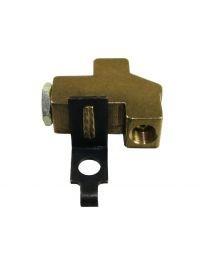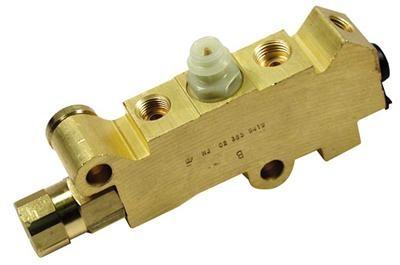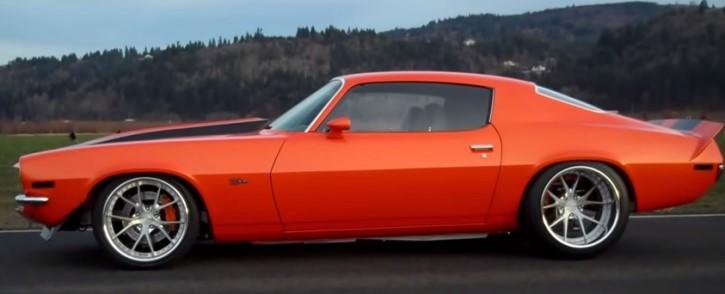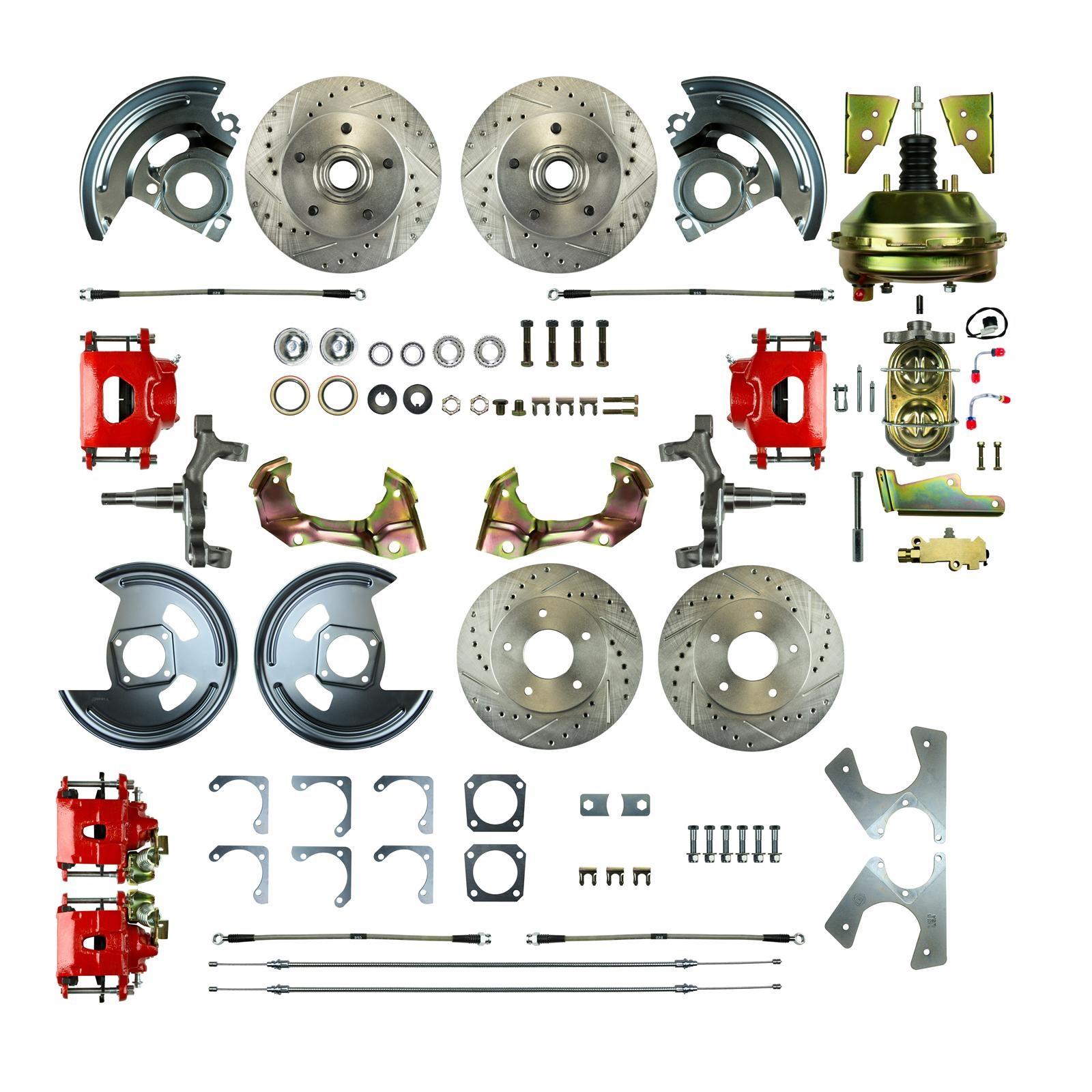Disc Brake Conversions
Understanding GM Proportioning Valves, Distribution Blocks, Metering Blocks and Combination Valves
Figure 1: 1967-69 GM A/F/X Body Disc Brake Proportioning Valve Shown
Of all the “systems” that make up your muscle car or hot rod, the brake system is perhaps the most important. There is an old saying that goes “you shouldn’t go if you can’t stop” and that has never been truer than it is today.
Original brake systems that were designed for the 1960’s and 70’s GM, Ford and Mopar muscle missiles that roamed the highways are 50+ years old and are no match for today’s hyper-paced traffic and mega horsepower pro-touring muscle cars. Add the combination of wider wheels, super sticky tires or the 550+ horsepower that many of our classic Camaro’s, Chevelle’s or Nova’s have been armed with and a stock, ill-maintained brake system becomes inadequate at best and dangerous at worse. It is critical then to verify every component of your brake system are working together and in good shape.
Controlled and effective stopping power, whether it’s to keep from hitting the distracted minivan driver that just pulled out in front of you or putting your resto-mod’s suspension and drive train to the test on your favorite highway off ramp have made disc brake conversions a stylish and functional upgrade.
Figure 2: 1970-72 GM A-Body combination valve mounting location shown
One of the unsung heroes of a brake system is the Proportioning Valve which is located just below and near the master cylinder. Proportioning Valves became common on brake systems when cars moved from having front and rear drum brakes to the more modern front disc and rear drum brake arrangement.
To better understand the proportioning valve and what it does, we first need to get some terminology right. Not every block in a GM muscle car brake system is a proportioning valve.
-
A Proportioning Valve has the job of restricting the amount of brake pressure sent to the rear of a brake system under heavy or severe braking. A common ratio or brake bias for a proportioning valve is to distribute 60% pressure to the front brakes and 40% pressure to the rear brakes. As brakes are forcefully applied, the front of the vehicle experiences additional loading as energy is transferred from the rear of the car to the front wheels requiring more front brake bias and less rear brake bias.
Typically, proportioning valves were only found on vehicles with front disc brakes. Without the proportioning valve to reduce rear brake bias, rear wheel lock up under aggressive braking could cause a loss of control or a spin.
Distribution Block, Brake, 1970-72 A-Body @ OPGI.com
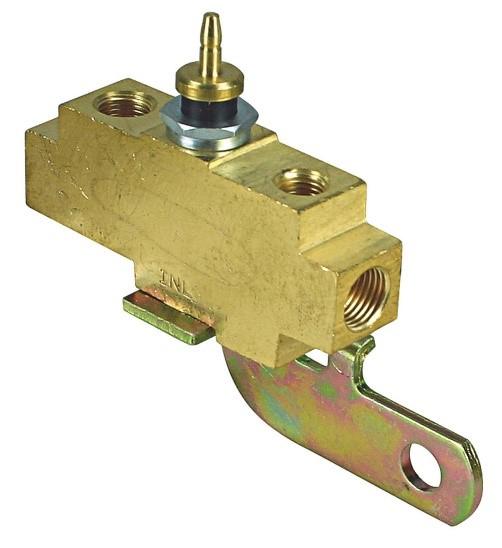
Figure 3: 1970-72 GM A-Body Distribution Block Shown
-
A Distribution Block has the job of distributing brake fluid to the different brake lines in the brake system and typically has a failure warning switch in the event of a half system failure (IE: rear brakes go out). The distribution block has no effect on controlling brake bias and is simply a place where one-line splits into two or more brake lines.
Figure 4: 1967-69 Camaro Hold-Off Valve Shown
- Metering Blocks were found on many (but not all) vehicles that originally had front disc and rear drum brakes and holds pressure off the front brakes up to a certain brake pressure. This delay or hold in pressure to the front brakes allows brake pressure to overcome the mechanical spring tension found in rear drum brakes and results in better front to rear brake balance at low brake pressure.
- A Combination Valve combines all three of the above blocks into one unit. GM cars manufactured from 1967-1970 with front disc brakes could have had two or all three (proportioning, distribution and metering) valves/blocks on the car separately. From 1971-1977, GM went a different direction on cars with front disc brake and incorporated the three valves into one combo valve for better performance and a reduction in hydraulic connections that could lead to leaks and warranty claims.
Make Sure You Have the Correct Proportioning Valve When Converting to 4-Wheel Disc Brakes!
Figure 5: The Right Stuff's PV71 Brake Proportioning Valve Shown
Control of the brake pressure generated by the master cylinder is performed by the proportioning valve and is expressed as brake bias. Brake Bias is simply the percentage of braking that either the front or rear brake system generates as the result of brake pedal pressure.
As previously noted, typical brake bias for a factory GM front disc/rear drum set up is typically 60/40 (60% front/40% rear). When converting to a 4-wheel disc brake conversion make sure to use a proportioning valve that it designed for 4-wheel disc brakes! A proportion valve designed for a disc/disc combination will typically have a brake bias of 50/50 and will not incorporate a hold off feature in the valve. Rear disc brakes do not have the brake springs that drum brakes do and therefore do not require this hold off feature.
One Last Proportioning Valve Hurdle...Vehicle Modifications that Can Alter Brake Bias and Hurt Braking Performance
There are several things that we as car owners do that have unintended consequences in the way components work together and alter brake bias.
Modifications that can alter brake bias and braking performance include:
- Sticky tires
- Increased Rotor Diameter
- Increased caliper pistons or number of pistons in a caliper
- Increased brake pad coefficient or brake pad size
- More or less weight on the front wheels (IE: installing lighter aluminum intake or cylinder heads)
- Increase in the vehicles center of gravity (any lifted 4x4)
- Un-sprung weight increases (larger and heavier wheels)
When one or all of the above modifications are present on a vehicle, the stock non-adjustable proportioning valve will not be calibrated to provide the best o even safe possible braking performance.
Issues such as an over/under sensitive brake pedal feel or the rear wheel skid under hard braking up are an indicators that a vehicles brake bias is incorrect and needs to be corrected to match the modifications made by replacing the fixed type proportion valve with an adjustable proportioning valve and “dialing” in the correct brake bias.
Proportioning valves and the brake bias that they control are small parts of a larger brake system that you depend on for you and your vehicles safety every time you press the brake pedal.
One way to ensure that you get a braking experience that is engineered to work with the modifications that you have made to your car is to purchase a complete 4-wheel disc brake conversion kit designed to work as a system like the ones offered by First Place Auto Parts.
A 4-wheel disc brake conversion kit will include the all the parts the needed to make installation easy, exceed your performance expectations, look good and work as an engineered braking system.Each component of our disc brake conversion kits are designed to work together as a system and takes the guess work out of the process.
If you have questions about what valve or conversion kit is right for your application call one of a brake application experts at 1-877-797-1969. We welcome the opportunity to speak with fellow enthusiasts to help them with their project!



